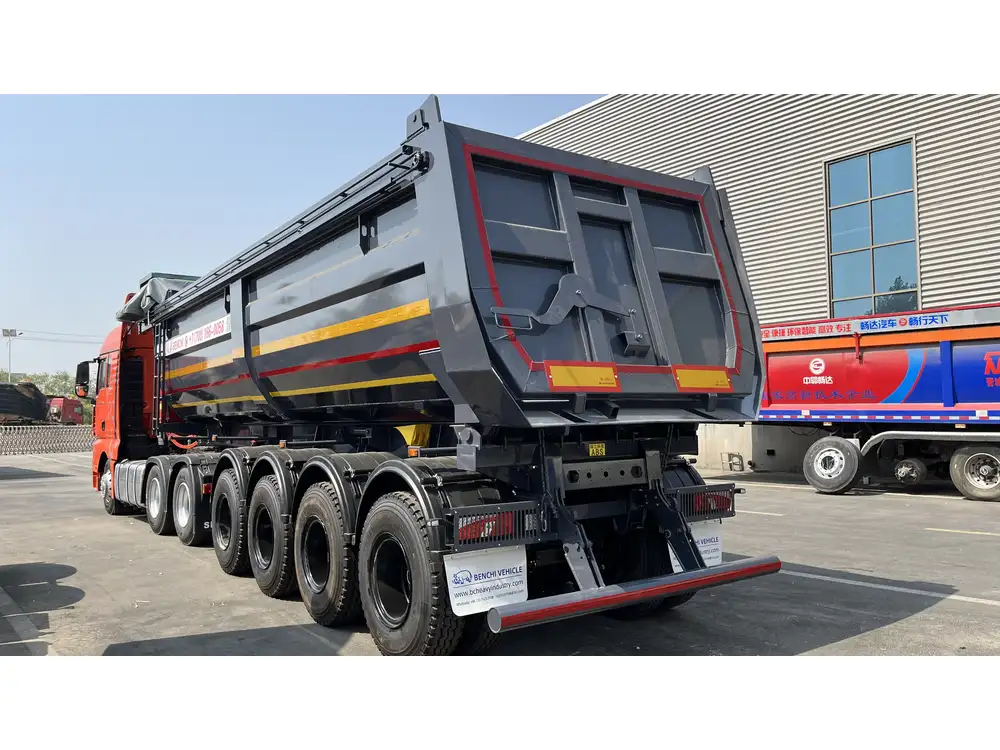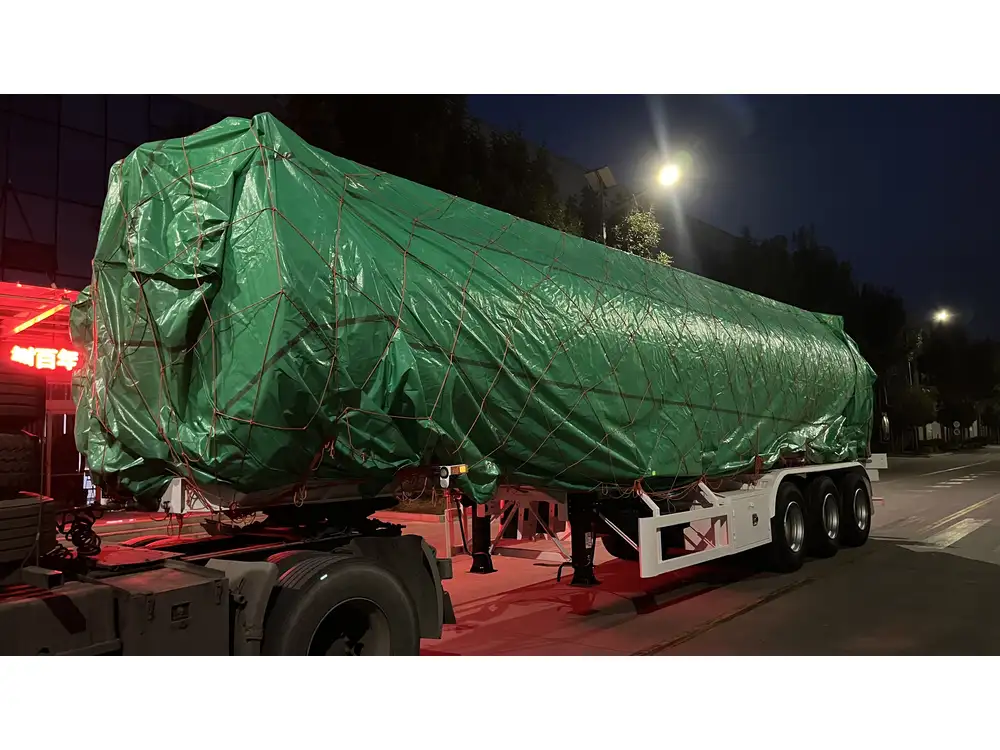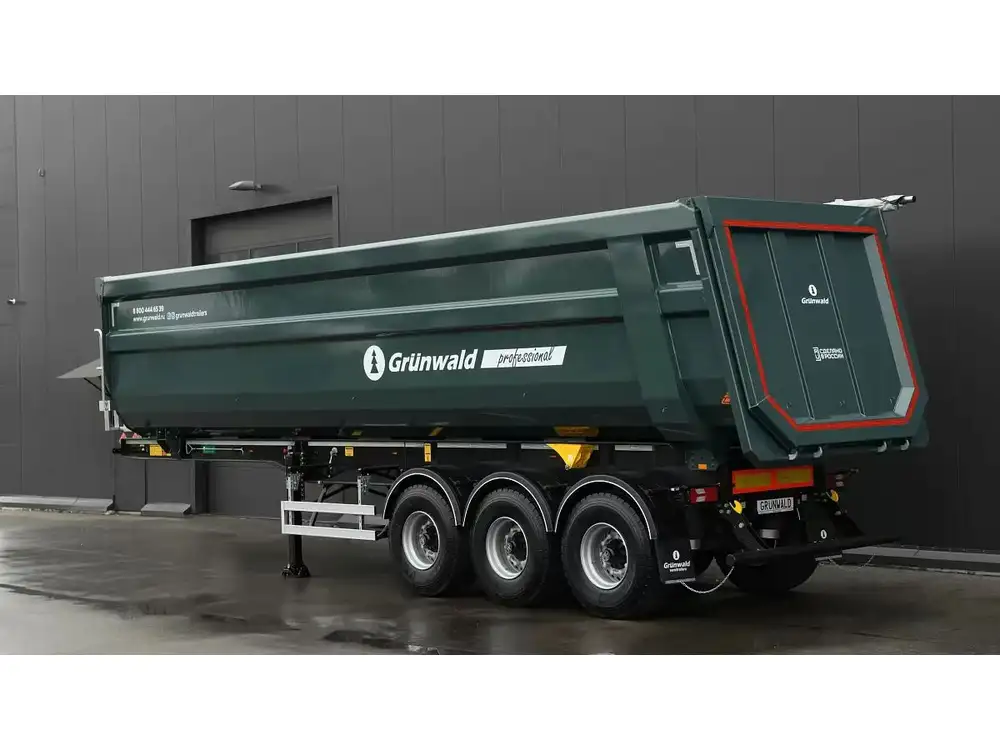The Definition of Semi-Trailer
A semi-trailer, often referred to colloquially as a “semi,” is a type of trailer designed to transport goods. It distinguishes itself by having a portion of its weight supported by a truck or tractor unit through a coupling mechanism, which leaves part of the trailer unsupported and, hence, “semi.” These vehicles are pivotal in freight transport, allowing for efficient movement of a variety of commodities across vast distances, enhancing logistics operations for manufacturers, retailers, and suppliers alike.
The History of Semi-Trailers
The innovation of semi-trailers dates back to the early 20th century. As industries began to grow and the demand for transporting goods surged, the limitations of traditional freight solutions became apparent. Entrepreneurs started to modify existing truck designs, eventually leading to the creation of the semi-trailer. This evolution not only revolutionized the transport industry but also provided manufacturers with the capability to deliver heavier loads efficiently.

Key Milestones
- 1920s: Introduction of articulated vehicles combining trucks and trailers.
- 1940s: Advancements in materials increased load capacity and reduced overall weight.
- 1970s: Standardization of sizes (e.g., 53-foot trailers in North America) and regulations concerning road safety.
Types of Semi-Trailers
Semi-trailers come in various configurations tailored for specific transport needs. Here’s a structured overview of common types:
| Type of Semi-Trailer | Description | Usage |
|---|---|---|
| Flatbed Semi-Trailer | No sides or roof, designed for easy loading and unloading. | Construction materials, heavy machinery. |
| Reefer Trailer | Insulated with a refrigeration unit for temperature-sensitive goods. | Perishable food items, pharmaceuticals. |
| Dry Van Trailer | Enclosed and weatherproof, ideal for general freight. | Packaged goods, household items. |
| Tank Trailer | Built to transport liquids, gases, or hazardous materials. | Chemical products, fuels, fresh water. |
| Lowboy Trailer | Designed for transporting heavy equipment, featuring a low deck height. | Heavy construction machinery, oversized loads. |
Why Use Semi-Trailers?
The utilization of semi-trailers in logistics is not just a trend; it’s a strategy embraced by businesses seeking efficient transportation solutions. The advantages are numerous and significant:
- Flexibility: Semi-trailers can be easily coupled or de-coupled from trucks, allowing for quick loading and unloading operations.
- Capacity: They offer high load capacities, which is indispensable for businesses looking to maximize their logistics efficiency.
- Cost-Effectiveness: The combination of reduced fuel consumption per ton transported and increased efficiency often translates to lower operational costs.
- Versatility: With various designs, semi-trailers can be used for different types of cargo, addressing a wide array of industry needs.

The Mechanics of Semi-Trailers
Understanding the technical aspects of semi-trailers is crucial for users seeking to optimize their transportation operations. These trailers operate based on a unique coupling mechanism, which contributes to their stability and maneuverability.
Coupling System
The coupling system is the heart of a semi-trailer’s operation. Typically, this involves a fifth wheel mounted on the truck chassis, which connects the semi-trailer to the tractor unit. This design allows for greater flexibility while turning—an essential characteristic when maneuvering through urban environments or tight spaces.
Suspension Systems
The suspension system of a semi-trailer plays a vital role in ensuring the stability and safety of the load during transportation. Various suspension types are employed based on the application:
- Spring Suspension: Commonly used for general freight, providing a smooth ride.
- Air Suspension: Offers superior comfort and load distribution, particularly beneficial for delicate loads.
- Multi-Axle Suspension: Enhances load-carrying capacity and allows better weight distribution across axles.

Weight Distribution and Load Management
Proper weight distribution is paramount in semi-trailer operation. Overloading can lead to increased wear on tires, compromised safety during transport, and potential legal penalties. Several tools are employed to ensure compliance with weight regulations:
- Scale Systems: Integrated or portable scales allow for precise weight measurements before departure.
- Load Planning Software: Advanced software solutions assist logistics managers in planning loads to optimize weight distribution.
Regulatory Compliance
Transporting goods via semi-trailers is subject to an array of regulations that vary by region and cargo type. Ensuring compliance with federal and local laws is critical to avoid fines and operational disruptions. Key regulations to consider include:
- Weight Limits: Legal weight limits for trucks can differ based on the number of axles and state regulations.
- Safety Inspections: Regular inspections are mandated to ensure that semi-trailers meet safety standards.
- Load Security: Proper securing of cargo is essential to prevent accidents on the road, adhering to regulations set by organizations like the Federal Motor Carrier Safety Administration (FMCSA).
The Future of Semi-Trailer Technology
As technology advances, the semi-trailer industry continues to innovate, leading to enhanced efficiency and safety. Here are some emerging trends worth noting:

Automation
The rise of automated transport solutions is gaining traction in the semi-trailer sector. Technologies such as self-driving trucks and automated coupling systems could revolutionize logistics operations, reducing human error and increasing efficiency.
Advanced Materials
The use of lightweight, high-strength materials is becoming more prevalent. These innovations contribute to increasing load capacity while reducing fuel consumption. For instance, composites and advanced aluminum alloys are being incorporated into trailer construction, yielding a more efficient design.
Connectivity
Today’s semi-trailer designs are increasingly integrated with smart technologies for tracking and monitoring. GPS systems and IoT devices allow logistics managers to oversee fleets in real-time, providing insights into location, fuel consumption, and maintenance needs.

Sustainability
Eco-friendly practices are becoming paramount in the transportation industry. Semi-trailer manufacturers are exploring alternative fuel sources and emission reduction technologies. Emphasizing sustainable practices not only caters to consumer demand but often leads to financial savings in the long run.
Conclusion: The Essential Role of Semi-Trailers in Today’s Economy
Semi-trailers serve an essential function in the global economy, facilitating the efficient transport of goods that fuels trade and commerce. They are the backbone of logistics companies, manufacturers, and distributors, allowing businesses to thrive in an increasingly competitive landscape.
In summary, the term “semi” in semi-trailer accurately reflects the design where a substantial portion of its weight is supported by a tractor. With an understanding of the various types, benefits, technical aspects, and future innovations, stakeholders in the transport and logistics industries can make informed decisions for their operations.
Key Takeaways
- The semi-trailer is a unique vehicle, fundamental to modern logistics.
- Various types of semi-trailers cater to specific transport needs, enhancing their versatility.
- Understanding the mechanics and compliance matters is crucial in operating these vehicles safely and effectively.
- The future of semi-trailers lies in technological advancements and a shift towards sustainable practices, ensuring their continued relevance and utility in the transportation sector.
By leveraging the diverse functionalities and possibilities that semi-trailers offer, businesses can not only streamline their transportation processes but also enhance their overall competitiveness in the market. The ongoing evolution in this sector is crucial, propelling us towards a dynamic future in freight logistics.



